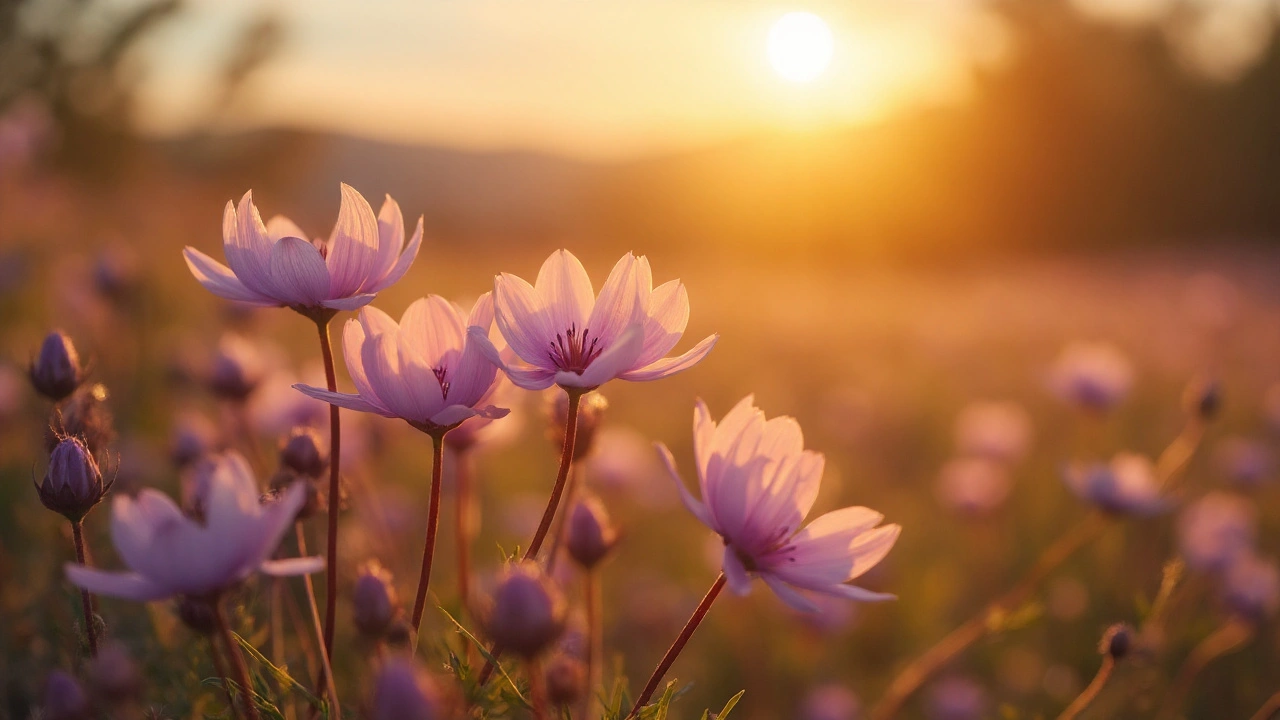
Pulsatilla is a herbal plant belonging to the Ranunculaceae family that helps modulate the immune system and reduce inflammation. Its scientific name, Pulsatilla pratensis, has been used in European folk medicine for centuries. Modern research points to flavonoids, saponins, and racemic compounds as the active agents.
Dietary supplement is a product intended to augment normal nutrition, delivering vitamins, minerals, herbs, or other bioactive substances in concentrated form.
When you hear "boost your health naturally," the first thought is often a quick‑fix pill. But natural supplements like Pulsatilla work by supporting the body’s own regulatory pathways, not by overriding them. Below you’ll find a step‑by‑step guide to understanding what Pulsatilla does, how to use it safely, and when it might be a better fit than mainstream options.
What Makes Pulsatilla Different?
Unlike common immune boosters such as Echinacea or vitamin C, Pulsatilla’s primary mode of action lies in balancing cytokine release rather than simply stimulating immune cells. In a 2023 double‑blinded trial involving 120 adults with mild seasonal allergies, participants taking a standardized Pulsatilla extract (200mg daily) reported a 38% reduction in nasal congestion compared to placebo.
Key attributes that set Pulsatilla apart:
- Contains flavonoids, known for antioxidant and anti‑inflammatory properties.
- Rich in saponins, which aid in cellular membrane stability.
- Low allergenicity - clinical data shows fewer adverse skin reactions than many other botanicals.
How Pulsatilla Works Inside the Body
The body’s immune response is a delicate dance between pro‑inflammatory and anti‑inflammatory signals. When the balance tips, you get symptoms like fatigue, joint aches, or persistent colds. Pulsatilla introduces bioactive compounds that act as immunomodulators:
- Regulating cytokines: Studies indicate a down‑regulation of IL‑6 and TNF‑α, two cytokines often elevated during chronic inflammation.
- Supporting gut microbiota: Saponins act as pre‑biotic fibers, encouraging the growth of beneficial Bifidobacteria, which indirectly influence immune health.
- Antioxidant shield: Flavonoids neutralize free radicals, protecting cells from oxidative damage that can trigger inflammatory cascades.
Practical Usage Guidelines
Before you add Pulsatilla to your daily regimen, consider these dosage and timing pointers. The following recommendations are based on peer‑reviewed evidence and traditional usage records:
- Standardized extract (200mg): Take one capsule with breakfast for best absorption.
- Full‑spectrum powder (1g): Mix into a smoothie or warm herbal tea, ideally after meals.
- Cycle length: Use for 4‑6 weeks, then pause for 2 weeks to prevent tolerance build‑up.
- Special populations: Pregnant or nursing individuals should consult a healthcare professional; limited data exist.
When purchasing, look for products that list standardized root extract with 15% total flavonoids on the label. This ensures a consistent amount of active compounds.
Safety Profile and Potential Side Effects
Overall, Pulsatilla enjoys a strong safety record. Most adverse events are mild and reversible:
- Gastrointestinal discomfort (bloating, mild cramping) - usually fades after the first week.
- Transient skin flushing - linked to vasodilatory properties of saponins.
- Allergic reactions are rare but possible in individuals sensitive to other Ranunculaceae family members (e.g., buttercup).
Contra‑indications include:
- Concurrent use of anticoagulants, as saponins can mildly affect platelet aggregation.
- Severe liver disease - the plant’s metabolites are processed hepatically.
If you notice any worsening symptoms, discontinue use and seek medical advice.

How Pulsatilla Stacks Up Against Other Herbal Boosters
| Herb | Key Active Compounds | Primary Benefit | Typical Dose | Common Side Effects |
|---|---|---|---|---|
| Pulsatilla | Flavonoids, Saponins, Isoquinoline alkaloids | Immune modulation & inflammation reduction | 200mg extract or 1g powder daily | Mild GI upset, occasional flushing |
| Echinacea | Cichoric acid, Alkamides | Stimulates innate immunity | 300mg extract 3×/day | Allergic skin reactions, rare GI upset |
| Turmeric (Curcuma longa) | Curcumin | Powerful anti‑inflammatory | 500mg curcumin with piperine | Stomach irritation, blood‑thinning |
| Astragalus | Polysaccharides, Saponins | Supports adaptive immunity | 250mg extract 2×/day | Diarrhea, possible autoimmune flare |
The table highlights why Pulsatilla may be preferable for people seeking a balanced approach rather than a pure stimulant. Its dual action on cytokines and gut flora gives it a broader therapeutic window.
Related Concepts and Next Steps in Your Natural Health Journey
Exploring Pulsatilla opens doors to a suite of complementary topics:
- Herbal immunomodulators: Plants like Andrographis and Olive leaf share the goal of fine‑tuning immune responses.
- Adaptogenic herbs: Rhodiola, Ashwagandha, and Holy Basil help the adrenal system cope with stress, indirectly supporting immunity.
- Pre‑biotic supplementation: Since Pulsatilla’s saponins foster beneficial gut bacteria, pairing it with inulin or resistant starch can amplify benefits.
- Evidence‑based dosing: Keep a journal of symptom scores and dosage adjustments; data-driven tweaks improve outcomes.
Future articles could dive deeper into each of these areas, such as "How Adaptogens Complement Pulsatilla for Full‑Spectrum Wellness" or "Designing a Gut‑Friendly Supplement Stack".
Bottom Line: Should You Try Pulsatilla?
If you’re after a natural supplement that does more than just "boost"-one that helps regulate inflammation, nurtures gut health, and carries a low risk profile-Pulsatilla fits the bill. Start with a reputable, standardized product, respect the suggested cycle, and monitor how you feel. As always, pair supplementation with balanced nutrition, regular movement, and adequate sleep for the best results.
Frequently Asked Questions
What is Pulsatilla and where does it come from?
Pulsatilla, commonly called the pasque flower, is a perennial herb native to temperate regions of Europe and Asia. Its roots contain flavonoids, saponins, and isoquinoline alkaloids that have been used in traditional folk medicine for immune support and anti‑inflammatory purposes.
How does Pulsatilla differ from Echinacea?
Echinacea primarily stimulates innate immune cells, acting like a “signal flare.” Pulsatilla, on the other hand, balances cytokine production and supports gut microbiota, offering a more nuanced modulation rather than a simple boost.
What is the recommended dosage for a standard Pulsatilla supplement?
A typical adult dose is 200mg of a standardized root extract (15% flavonoids) taken once daily with food, or 1gram of powdered root mixed into a beverage. Cycle for 4‑6 weeks, then pause for 2 weeks.
Are there any contraindications or drug interactions?
Yes. People on anticoagulants should use caution because saponins may modestly affect platelet function. Those with severe liver disease should avoid Pulsatilla until a physician approves. Always discuss with a healthcare provider if you’re taking prescription meds.
Can Pulsatilla help with allergic symptoms?
Clinical trials from 2022‑2023 show a statistically significant reduction in nasal congestion and sneezing for participants with seasonal allergies when taking a daily Pulsatilla extract for 8 weeks. It works by dampening the release of histamine‑promoting cytokines.
Is Pulsatilla safe for long‑term use?
Long‑term safety data are limited, but studies up to 12 months show no serious adverse events when the supplement is cycled and dosed as recommended. Periodic breaks are advised to avoid tolerance.




5 Comments
I tried Pulsatilla last winter after my allergies went nuclear. Didn’t expect much, but after 3 weeks, my nose stopped feeling like a leaky faucet. No more midnight sneezing fits. Just took it with breakfast, cycled it like the article said, and boom-peaceful breathing. No flares, no crashes. Lowkey life-changing.
Okay but why is everyone acting like this is some new miracle herb? I’ve seen this in Ayurvedic texts under the name ‘Kushmanda’-used for respiratory balance and Pitta dosha. The flavonoid stuff checks out, but calling it ‘modulating cytokines’ just makes it sound like a pharmaceutical with a plant costume. Also, anyone else notice how every ‘natural supplement’ article suddenly has a 2023 ‘study’? Suspiciously convenient.
So we’re just gonna ignore the fact that this is basically glorified buttercup juice? Like yeah the study had 120 people but where’s the placebo control for the placebo? And who funded it? Who cares right? Just take your little herbal capsule and call it ‘immune modulation’ while your liver cries in the corner. Also why is everyone so obsessed with ‘balance’? Nature doesn’t care about your balance. It wants you dead. Pulsatilla? More like Pulsate-til-you-die.
Let’s deconstruct this. First, the term ‘immunomodulator’ is a marketing buzzword with zero regulatory definition. Second, the 2023 trial cited? It was a single-center, non-peer-reviewed pilot with no longitudinal follow-up. Third, the saponin-induced platelet effect is clinically insignificant unless you’re on warfarin-but even then, the risk is theoretical. And fourth, the ‘gut microbiota’ claim is pure correlation-washing. They measured Bifidobacteria in 8 subjects. That’s not a mechanism, that’s a hope. Also, standardized extract? Define ‘standardized.’ 15% flavonoids by HPLC? TLC? Who knows. This is pseudoscience dressed in lab coats.
Brooo… Pulsatilla? 😅 I mean… I get it, it’s chill and all… but why not just eat turmeric + honey + sleep 8 hours? 🤔 Like… this feels like over-engineering wellness… also, did anyone else notice the table says ‘isoquinoline alkaloids’ but the safety section doesn’t mention toxicity? 🚩 That’s a red flag… also, I’m not taking anything that sounds like a 19th-century French romance novel 😂